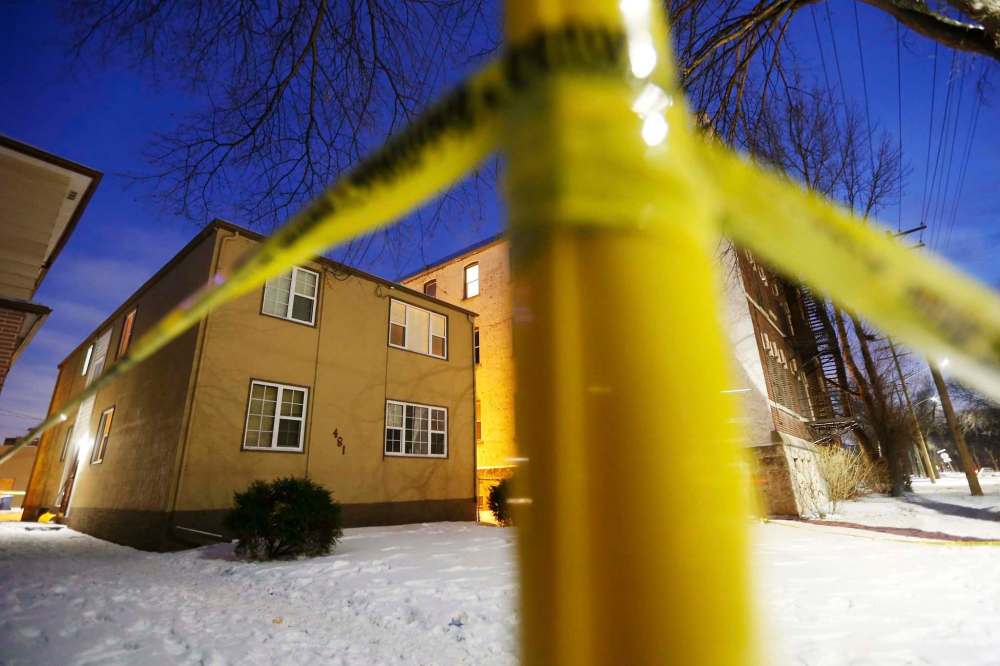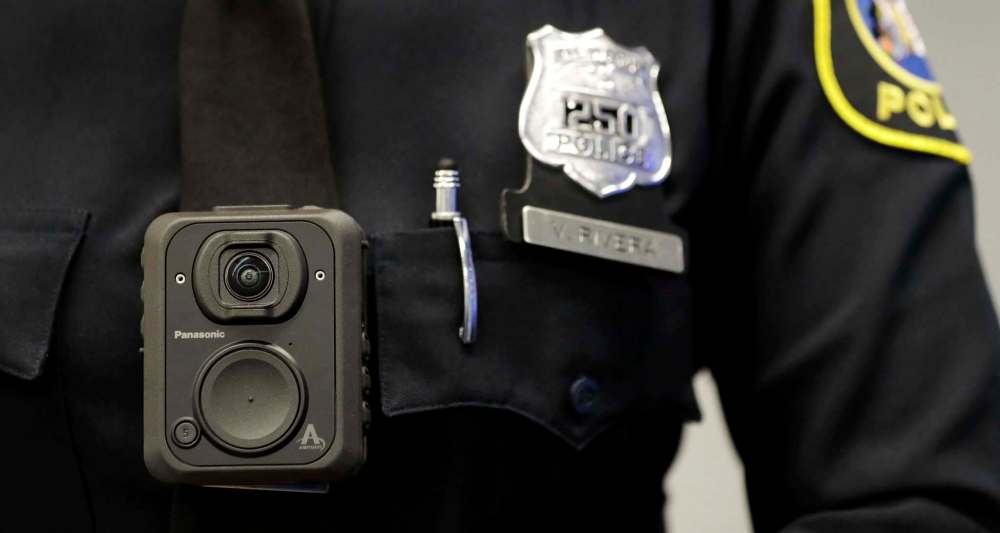Body cameras would provide a clearer picture
Police should be properly equipped -- for everyone's benefit
Advertisement
Read this article for free:
or
Already have an account? Log in here »
To continue reading, please subscribe:
Monthly Digital Subscription
$1 per week for 24 weeks*
- Enjoy unlimited reading on winnipegfreepress.com
- Read the E-Edition, our digital replica newspaper
- Access News Break, our award-winning app
- Play interactive puzzles
*Billed as $4.00 plus GST every four weeks. After 24 weeks, price increases to the regular rate of $19.00 plus GST every four weeks. Offer available to new and qualified returning subscribers only. Cancel any time.
Monthly Digital Subscription
$4.75/week*
- Enjoy unlimited reading on winnipegfreepress.com
- Read the E-Edition, our digital replica newspaper
- Access News Break, our award-winning app
- Play interactive puzzles
*Billed as $19 plus GST every four weeks. Cancel any time.
To continue reading, please subscribe:
Add Winnipeg Free Press access to your Brandon Sun subscription for only
$1 for the first 4 weeks*
*$1 will be added to your next bill. After your 4 weeks access is complete your rate will increase by $0.00 a X percent off the regular rate.
Read unlimited articles for free today:
or
Already have an account? Log in here »
Hey there, time traveller!
This article was published 19/12/2017 (2847 days ago), so information in it may no longer be current.
It was last week’s police shooting — the fifth this year — that reminded me of something Deputy Police Chief Gord Perrier said during an interview conducted prior to the most recent event.
Perrier has had a unique insider’s view of how the Winnipeg Police Service has changed in the nearly 30 years since the fatal police shooting of Indigenous leader J.J. Harper and the Aboriginal Justice Inquiry that followed.
He wrote his master’s degree thesis on the AJI and what turned out to be a historic turning point for the city police and an awakening for the community. Perrier summed up his perspective with an analogy.

“I said prior to the AJI, it was, ‘Hey, look at those cops. Let’s get out of here before we get arrested.’ And today it may be, ‘Hey, look at those cops. The guys you’re looking for may be in that blue house there. Let’s make sure this goes down like it should.’”
Our deputy chief of police operations left out something in that imagined scenario.
The guys who stick around to make sure the cops act properly probably have cellphone cameras pointed at police. Sometimes, as we’ve witnessed in the United States in particular, that can offer a perspective that’s critical to cases of alleged police misconduct.
What’s missing now, though — at least in Winnipeg — is another crucial camera point of view.
That is of the officers who go into that blue house.
Body-worn cameras would have been useful — even crucial — to the members of the Independent Investigations Unit investigating why police arrived at the North End door of the 25-year-old man who was shot last week. Winnipeg police had intended to have 800 officers outfitted with the chest-worn cameras as early as this year. But a pilot project scheduled for 2016 was scrapped by city council during the civic budget process. The $1 million that had been approved for the study was diverted to the police operating budget to save the jobs of cadets and a new class of recruits. The Winnipeg Police Board has since directed the service to monitor pilot projects in other Canadian cities to improve understanding of all the issues involved, from cost to privacy.
Nearly five years ago when Winnipeg recommended the concept of cameras for police, pilot projects were already under way in Victoria, Edmonton and Calgary. Since then, Calgary has moved ahead, Edmonton has taken a wait-and-see approach and this summer the B.C. government, mindful of privacy issues, introduced legislation that would provide the legal powers for police in Victoria and elsewhere in the province to use the cameras. As for Canada’s largest police service, Toronto says it wants its officers to wear body cameras, but is waiting for technological improvements first.
In the United States, with public trust issues flaring in the aftermath of high-profile police shootings of minorities — police departments are almost all-in on body worn cameras. The New York Times recently reported that two years ago, 95 per cent of large American police departments were now using or have committed to using body cameras in the near future.
One of the major benefits of the program’s rollout was anticipated to be improved police conduct. But a rigorous year-and-half comparative study of Washington, D.C., police officers discovered that officers equipped with what was thought to be behaviour-modifying technology still used force and created civilian complaints at approximately the same rate as the cops who didn’t wear body cameras.
Trying to modify the conduct of cops may not be the most important outcome, though.

Holding them accountable could be.
As the Winnipeg Police Board wrote after plans for the body-camera project was put on hold: “Police accountability and public trust are still top priorities for the Board. Body-worn cameras are an emerging technology that has the potential to improve both. The Board will consider future opportunities for a pilot project before considering equipping all front-line members with cameras at an estimated cost of $15 million.”
Meanwhile, camera-shy cops are acutely aware of the 21st-century reality of citizens with cellphones doing what Deputy Chief Perrier suggested: watching police to “make sure this goes down like it should,” in case it doesn’t.
Of course, body-worn cameras can be as important for the protection of police officers as they are for the public who officers are sworn to protect.
But while Winnipeg waits for its politicians at all levels of government to do their part and make sure police are properly equipped — so investigators and courts can actually see what happens from the police officer’s actual point of view — it will be left to the rest of us to record it from ours.
gordon.sinclair@freepress.mb.ca
History
Updated on Tuesday, December 19, 2017 7:55 AM CST: Adds photos

